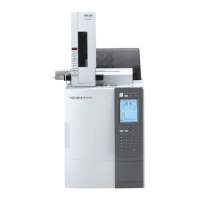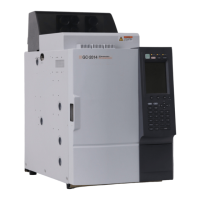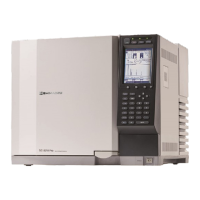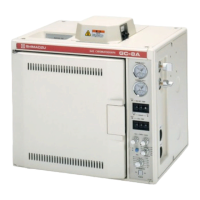9.1
9.9.
81FPD-2010
9 Appendix
9.1Quenching
What is quenching?
When hydrocarbon enters into the FPD, the effect is to reduce the detection response of the FPD for certain
components, especially sulfur. This phenomena is referred to as “Quenching”. Quenching does not occur for
all components and varies according to the concentration and the kind of the hydrocarbon.
If elution of the targeted compound occurs during quenching, analysis repeatability that prevents correct
quantitation may become worse. To enable accurate analysis, use the column and the temperature condition
that the peak of hydrocarbon and that of the component detected by FPD can be separated. Especially, do
not let it overlapped by a large peak such as solvent peak. Depending on samples, clean-up operation to
remove interfering components by pre-processing may be effective. It is convenient if you use FID or TCD
that allows detection of hydrocarbon when studying analysis conditions.
Fig. 9.1.1 FID and FPD
Fig. 9.1.2 It should be studied so that the peaks do not overlap each other.

